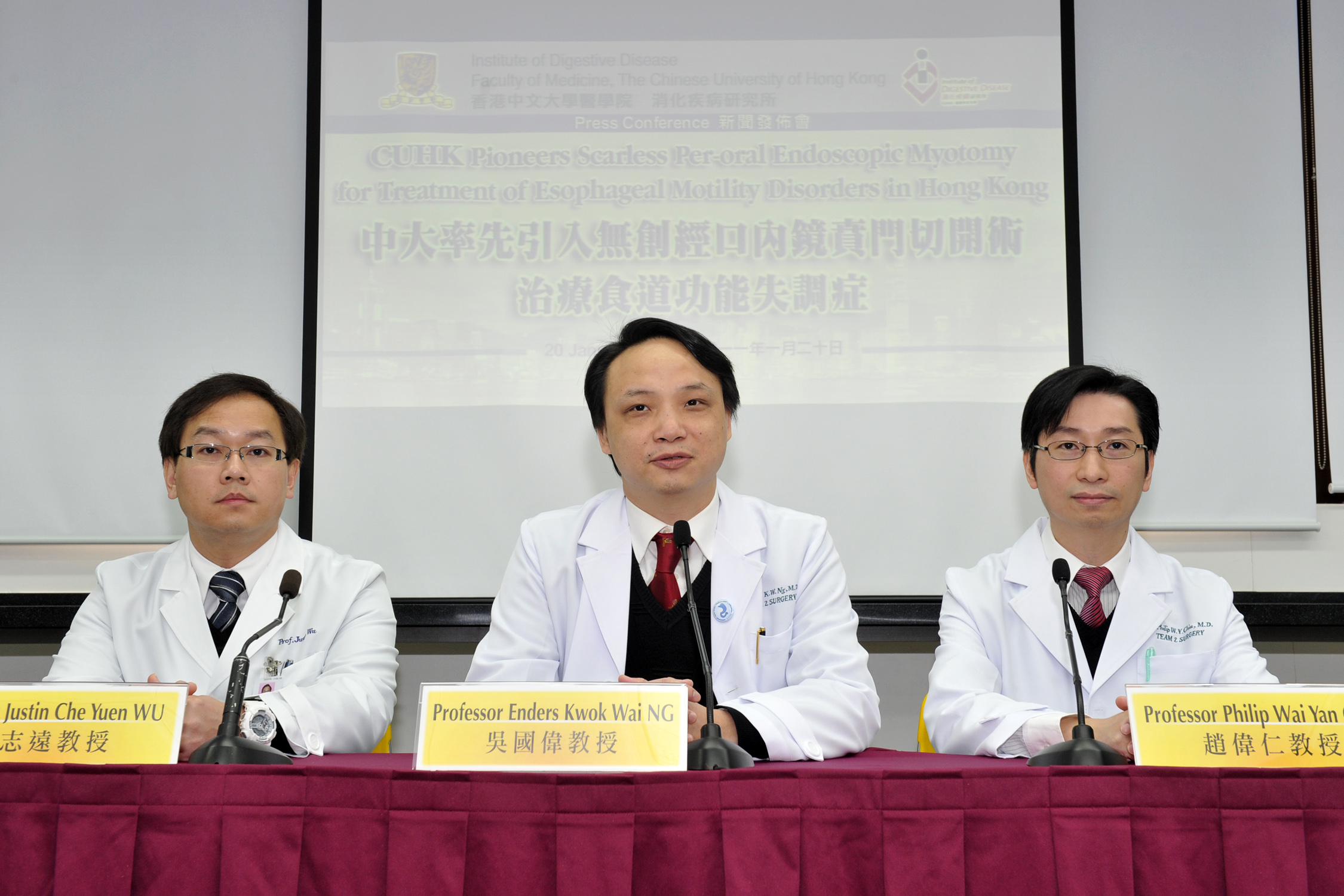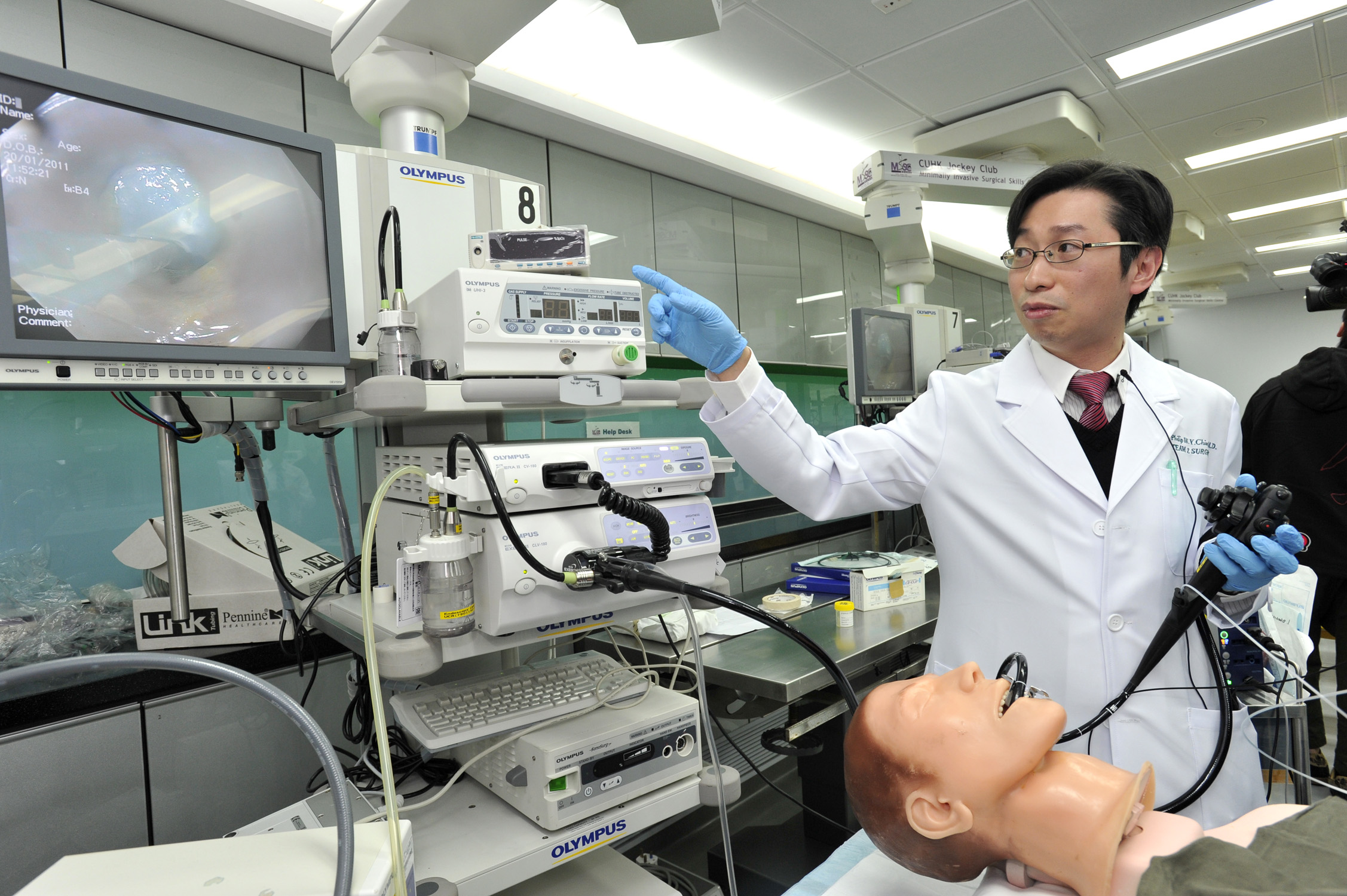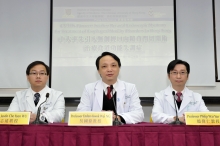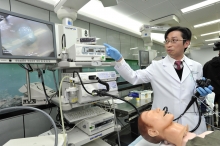CUHK
News Centre
CUHK Pioneers Scarless Per-oral Endoscopic Myotomy for Treatment of Esophageal Motility Disorders in Hong Kong
Esophageal motility disorders include achalasia, hypertensive lower esophageal sphincter (LES) and diffuse esophageal spasm. The typical presentations are dysphagia and chest pain. However, diagnosis of these esophageal motility disorders can be challenging because the symptoms are very similar to some important upper gastrointestinal diseases, such as esophageal cancer and gastroesophageal reflux disease (GERD).
In the past decade, both surgical cardiomyotomy and endoscopic balloon dilatation were employed as the main treatment for achalasia and hypertensive LES. The principle is to destroy the LES so as to restore the swallowing function. The overall symptomatic relief of dysphagia after balloon dilatation was around 70%. On the other hand, cardiomyotomy has been the surgical treatment since 1913, and in the modern era it is essentially performed with the laparoscopic approach. Studies and meta-analysis confirmed that laparoscopic cardiomyotomy achieved an overall symptom relief of 95%. Recently, researchers at The Chinese University of Hong Kong (CUHK) compared their results of endoscopic balloon dilatation against laparoscopic cardiomyotomy in 68 patients with achalasia. It was found that patients treated with cardiomyotomy had a significantly lower risk of recurrent dysphagia and reduced need of re-intervention. They also have a better quality of life after cardiomyotomy than balloon dilatation.
The Institute of Digestive Disease at CUHK is the first to introduce a novel device for investigation of esophageal motility disorders – High Resolution Manometry (HRM). This new machine can accurately access the function of esophageal body and LES in a real time manner. And the new concept of natural orifice transluminal endoscopic surgery (N.O.T.E.S.) was first introduced in 2000, of which surgery is meant to be performed without incision. Per-oral Endoscopic Myotomy (P.O.E.M.) is a novel approach aiming to perform cardiomyotomy using a flexible endoscope, and thus avoid the need of incision on the abdominal or chest wall. Currently, less than 5 centres in the world are performing this procedure and CUHK is one of the centres. CUHK has pioneered the performance of P.O.E.M. for treatment of achalasia and hypertensive LES among Chinese patients in Hong Kong since July 2010. Four patients underwent the P.O.E.M. procedure of whom three suffered from hypertensive LES and one had achalasia. The mean preoperative LES pressure was 70.3mmHg and it resumed normal to 6-26mmHg. The mean operative time was 92 minutes. All these patients tolerated diet on the next day after the procedure with contrast study confirming no leakage. All patients were relieved from dysphagia and pain.
In conclusion, CUHK successfully introduced a new type of non-invasive scarless surgery — P.O.E.M. to treat achalasia and hypertensive LES. The high resolution manometry also enhances the accuracy of diagnosing esophageal motility disorders through a precise and delicate measurement of esophageal pressure changes in real time.
(From left) Prof. Justin Che Yuen WU, Professor, Department of Medicine and Therapeutics, CUHK; Prof. Enders Kwok Wai NG, Head of Division of Upper Gastrointestinal Surgery, Department of Surgery, CUHK; and Prof. Philip Wai Yan CHIU, Professor, Division of Upper Gastrointestinal Surgery, Department of Surgery, CUHK







